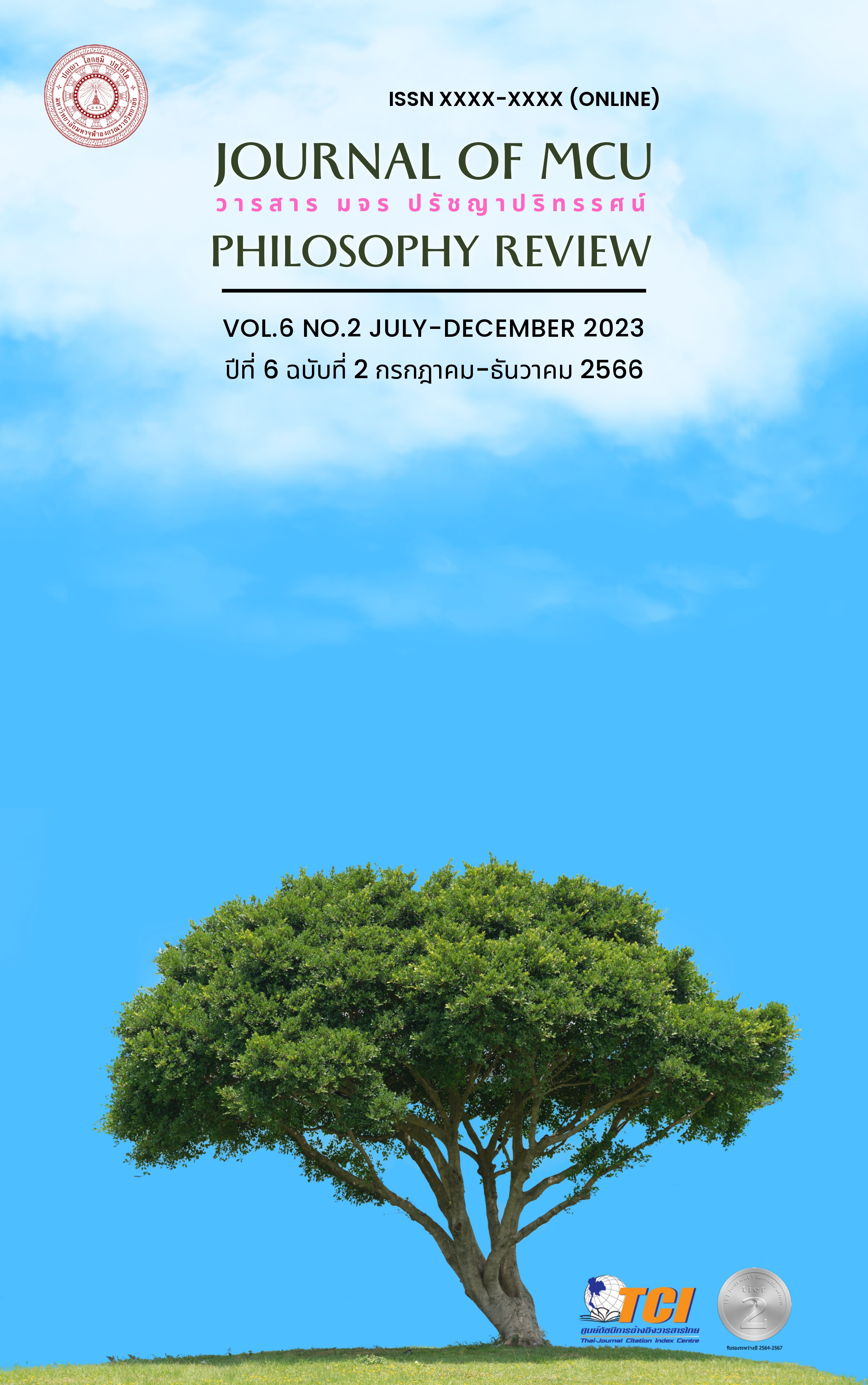An Application of John Locke’s Philosophy of Language to Understand Buddhadasa Bhikkhu’s the Concept of Everyday Language and Dhamma Language
Main Article Content
Abstract
In this paper, the objectives were purposely made to study John Locke's philosophy of language and Buddhadãsa Bhikkhu’s concept of Everyday Language and Dhamma language and it, then, attempted to apply John Locke's Philosophy of language to understand Buddhadãsa Bhikkhu’s concept of Everyday language and Dhamma language. This research employed the documentary research methodology.
In the research results, it argued that the concept of Everyday language and Dhamma language are conceptual interpretations of religious language whereby its idea bases are somehow accorded with John Locke’s philosophy of language. In this, Locke is of the view that the meaning of language is the idea in the mind derived from sensation and reflection. On the one hand, the meaning of Everyday language is purposely assigned to embrace the object, therefore, its’ meaning consists of complex ideas of things appearing in the real experience, or they are believed to exist but beyond the present experience, and their existence is necessarily awaited to be proven in the future. However, things that were told by religions do really exist and could be proven by senses. On the other hand, the Dhamma language focuses on feelings or states of things that appear to the mind. Thus, the Dhamma language’s meaning discards various complex ideas in concrete terms and thereby hinges on certain features in the Everyday language to compare with the appearance of abstract ideas. One of the main differences between these two levels of meaning is the consideration of substance from different angles.
Article Details

This work is licensed under a Creative Commons Attribution-NonCommercial-NoDerivatives 4.0 International License.
บทความที่ได้รับการตีพิมพ์เป็นลิขสิทธิ์ของวารสาร มจร ปรัชญาปริทรรศน์
ข้อความในบทความที่ได้รับการตีพิมพ์ในวารสาร ถือเป็นความรับผิดชอบของผู้เขียนบทความ และข้อคิดเห็นนั้นไม่ถือว่าเป็นทัศนะและความรับผิดชอบของกองบรรณาธิการวารสาร มจร ปรัชญาปริทรรศน์
References
ปิเตอร์ เอ. แจ็กสัน. (2557). พุทธทาสภิกขุ : พระพุทธศาสนานิกายเถรวาท และการปฏิรูปเชิงนวสมัยนิยมในประเทศไทย. แปลโดย มงคล เดชนครินทร์. พิมพ์ครั้งที่ 2. กรุงเทพมหานคร: สำนักพิมพ์แห่งจุฬาลงกรณ์มหาวิทยาลัย.
พุทธทาสภิกขุ. (2511). อุปสรรคสำคัญที่มีอยู่ในคำพูด. กรุงเทพมหานคร: พุทธสมาคมแห่งประเทศไทย ในพระบรมราชูปถัมภ์.
พุทธทาสภิกขุ. (2538). ธรรมโฆษณ์: โอสาเรตัพพธรรม. พิมพ์ครั้งที่ 3. กรุงเทพฯ : ธรรมทานมูลนิธิ.
พุทธทาสภิกขุ. (2548). ภาษาคน-ภาษาธรรม. หนังสือชุดมองด้านใน อนุสรณ์ 100 ปี พุทธทาส งานบันลือธรรม เล่มที่ 1. กรุงเทพมหานคร: ธรรมสภาและสถาบันบันลือธรรม.
สมฤดี วิศทเวทย์. (2536). ปรัชญาของจอห์น ล็อค. กรุงเทพฯ: ประกายพรึก.
สุวรรณา สถาอานันท์. (2536) ปรัชญาพุทธทาสภิกขุกับมหายานธรรม. (กรุงเทพฯ: โรงพิมพ์จุฬาลงกรณ์มหาวิทยาลัย.
เสฐียรพงษ์ วรรณปก. (2532). จากเสฐียรพงษ์ วรรณปก ถึงพระเทพเวที และพุทธทาสภิกขุ. นนทบุรี: ช่อมะไฟ.
John Locke. (2008). An Essay concerning Human Understanding. Oxford World's Classics. abridged with an Introduction and Notes by Pauline Phemister. New York: Oxford University Press.
Patricia Sheridan. (2010). Locke: A Guide for the Perplexed. Continuum.


